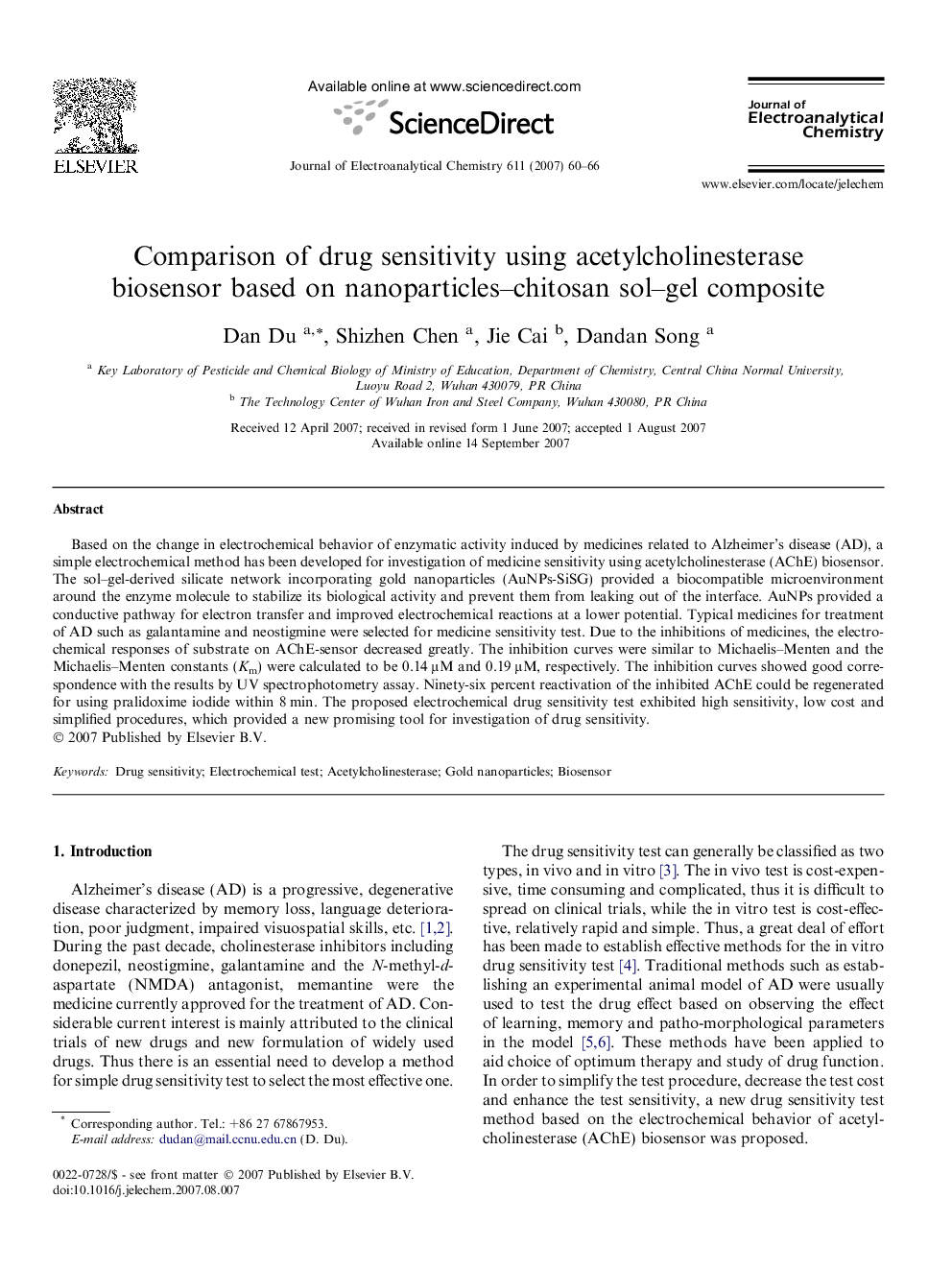| Article ID | Journal | Published Year | Pages | File Type |
|---|---|---|---|---|
| 220681 | Journal of Electroanalytical Chemistry | 2007 | 7 Pages |
Based on the change in electrochemical behavior of enzymatic activity induced by medicines related to Alzheimer’s disease (AD), a simple electrochemical method has been developed for investigation of medicine sensitivity using acetylcholinesterase (AChE) biosensor. The sol–gel-derived silicate network incorporating gold nanoparticles (AuNPs-SiSG) provided a biocompatible microenvironment around the enzyme molecule to stabilize its biological activity and prevent them from leaking out of the interface. AuNPs provided a conductive pathway for electron transfer and improved electrochemical reactions at a lower potential. Typical medicines for treatment of AD such as galantamine and neostigmine were selected for medicine sensitivity test. Due to the inhibitions of medicines, the electrochemical responses of substrate on AChE-sensor decreased greatly. The inhibition curves were similar to Michaelis–Menten and the Michaelis–Menten constants (Km) were calculated to be 0.14 μM and 0.19 μM, respectively. The inhibition curves showed good correspondence with the results by UV spectrophotometry assay. Ninety-six percent reactivation of the inhibited AChE could be regenerated for using pralidoxime iodide within 8 min. The proposed electrochemical drug sensitivity test exhibited high sensitivity, low cost and simplified procedures, which provided a new promising tool for investigation of drug sensitivity.
